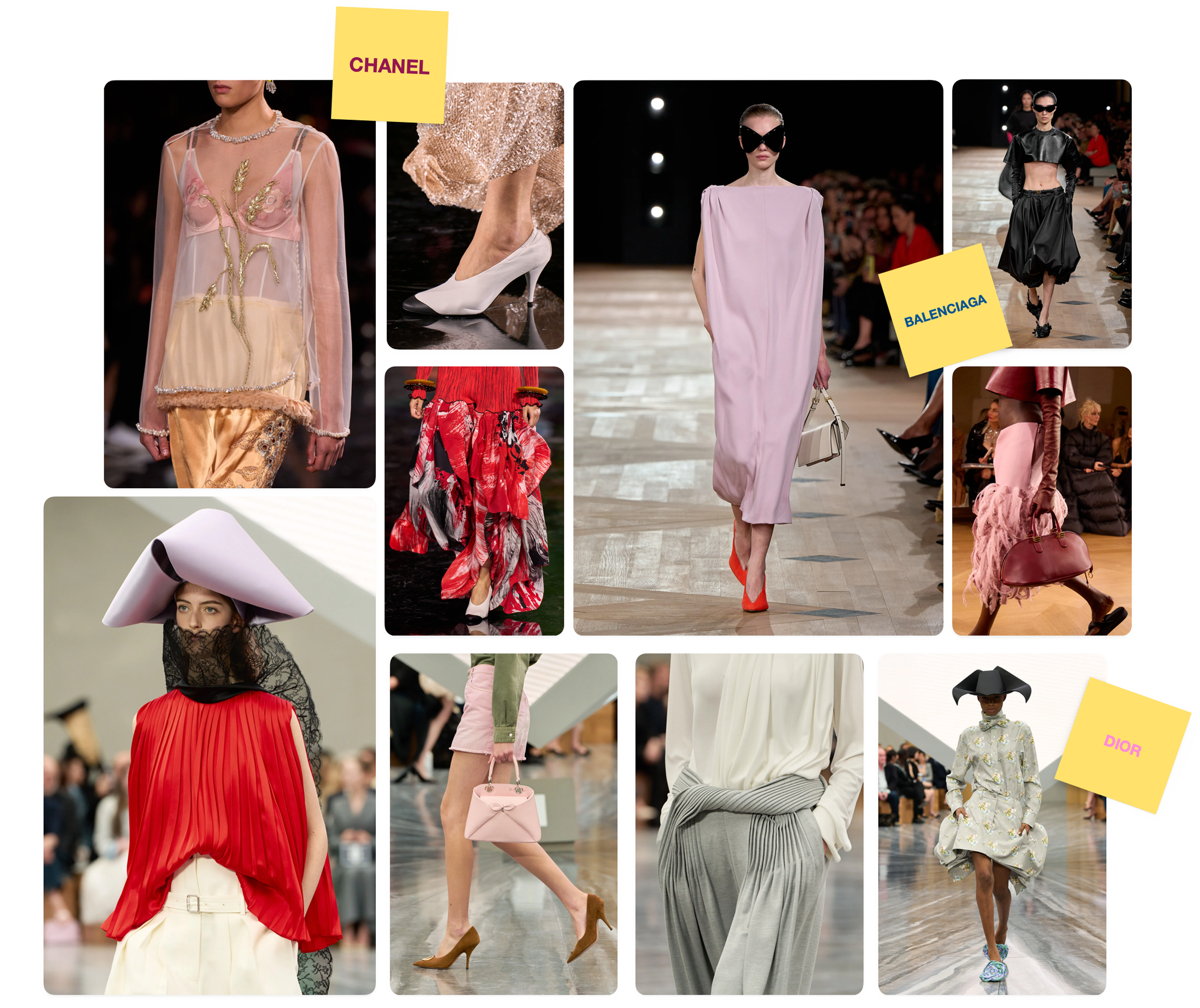S/S'26 Highlights II
The New Guards of the Old Houses: Chanel, Dior & Balenciaga
Here I am, back with my SS’26 review, this time keeping it professional, since nothing particularly dramatic or worth writing about has happened between Part I and Part II.
If there’s someone who can take the most bourgeois details and twist them into something effortlessly cool and wearable, it’s Jonathan Anderson. This is, by now, a proven fact.
To understand why, we need to revisit Dior’s origins. In 1947, Christian Dior created a brand for the elite. He reintroduced extravagance and luxury, celebrating opulence through full skirts, cinched waists, and ultra-femininity, the antithesis of Coco Chanel’s modernity, simplicity, and comfort. While Chanel freed women from corsets, Dior reimagined them as decorative, elegant beings designed to please the gaze. Handing this legacy to Anderson, whose cool is instinctive, not contrived, might have seemed risky. Yet, once again, he proved it was worth taking.
Anderson’s main focus was reinterpreting Dior’s iconic “New Look,” infusing it with modern energy. Cropped cuts, sculptural silhouettes, and pleated mini skirts paired with boxy jackets brought a youthful tension to the house’s heritage. Voluminous gowns with architectural folds added motion and grace. Fabric manipulation played a key role, creating unexpected shapes that felt alive. In a thoughtful nod to history, Anderson reinstated Dior’s original 1946 logo in the Cochin font, returning to its Parisian essence while rejecting the minimalist branding trend dominating luxury fashion today.
At the opposite end of the spectrum, Matthieu Blazy has done something both daring and deeply respectful: he reinvented Chanel while restoring its original values of comfort, simplicity, timeless elegance, freedom, and personal expression.
Blazy reinterpreted classic Chanel codes through a relaxed, almost nonchalant lens. Slouchy silhouettes, soft bouclé fabrics, and exaggerated drop waists gave the collection an ease that still carried quiet refinement. Tweed, Chanel’s most sacred fabric, appeared transformed into airy knits, while frayed versions in unexpected hues added a tactile, imperfect charm. Blazy’s Chanel wasn’t about perfection; it was about liberation.
And last but certainly not least, Pierpaolo Piccioli. The one who finally allowed Cristóbal Balenciaga to rest peacefully while still acknowledging Demna’s legacy with subtle touches like the alien eyewear.
Piccioli’s Balenciaga show opened with reimagined versions of the 1957 Sack Dress, setting the tone for a collection that celebrated freedom of form and movement. Silhouettes were generous yet deliberate, cocoon coats, sculptural tunics, and flowing gowns that balanced precision with emotion. Where Balenciaga once stood for strict structure, Piccioli introduced breath and sensitivity, allowing garments to move with quiet sensuality. His interplay between volume and restraint, pairing billowing dresses with minimalist tailoring, created a conversation between couture heritage and modern life. Streetwear elements like washed denim, t-shirts, and platform sandals appeared not as disruption but as dialogue.
This season was extremely anticipated, filled with major debuts, and it didn’t disappoint. For those not entirely in the fashion loop, here’s what matters beyond the aesthetics:
Fashion, like any art form, reflects our society. It’s self-expression wrapped in commerce, a creative act inside a corporate machine that decides who gets to sit at the table.
And yet, among the industry’s chaos, the true creatives continue to thrive. Glenn Martens opening his shows to the public, Stella McCartney pioneering sustainable materials, Lyas organizing free watch parties for fashion lovers, these gestures remind us that there’s still sincerity in this world of artifice.
Unlike paintings, installations, or even music, clothes have the power to define who we are or who we aspire to become. And each season, it’s inspiring to witness this ongoing dialogue between returning to the roots of a house, like Anderson and Piccioli, and pushing toward radical reinterpretation and innovation.
What fascinates me most is that, in the end, after endless reviews and headlines, fashion remains entirely subjective. Strip away the directors, the moodboards, the influences, even the perfection of a seam, and you’re left with a quiet symphony of whatever resonates with you. What you find beautiful becomes yours: to wear, to collect, or to simply keep as inspiration.
Because ultimately, we’re all shaped by where we come from, what we do, and who we hope to become. And whether you like it or not, fashion is one of the most eloquent ways to communicate that.

